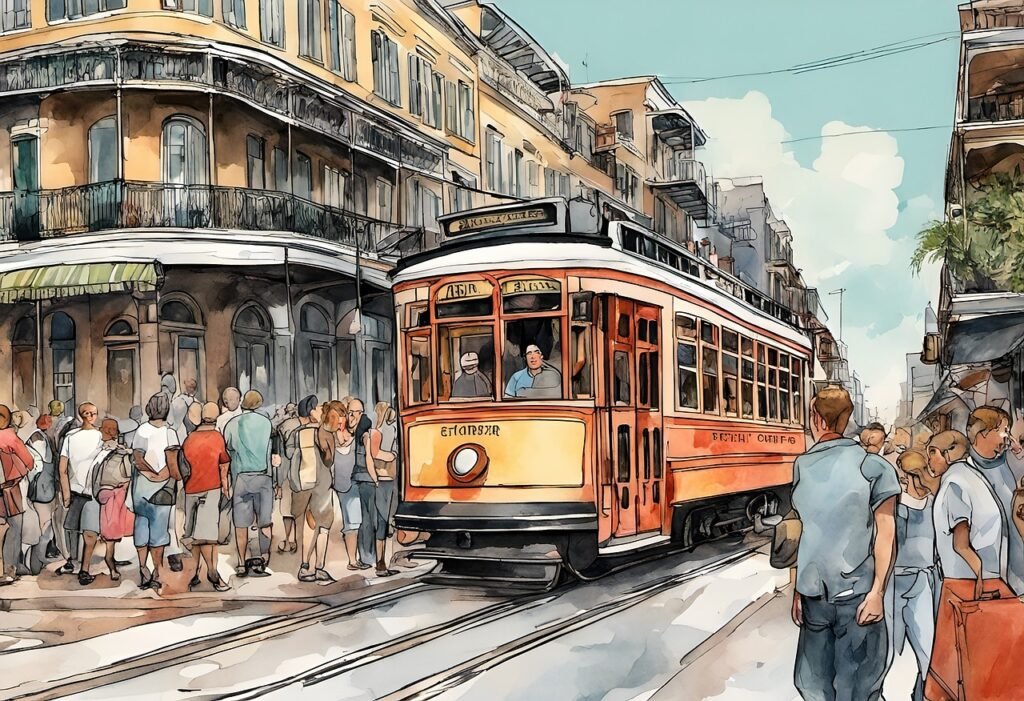When it comes to exploring a new destination, the choice of transportation can greatly impact your travel experience. One option that often stands out is car hire. Renting a car offers a level of freedom and flexibility that other modes of transportation may not provide. However, like any travel decision, it comes with its own set of pros and cons. In this article, we will delve into the advantages and disadvantages of car hire when you travel, helping you make an informed decision for your next adventure.
Pros of Car Hire
Flexibility and Independence: One of the most significant advantages of renting a car while traveling is the unparalleled freedom it offers. You can explore remote places, change your itinerary on a whim, and avoid being tied to strict timetables. This independence is particularly valuable if you prefer to set your own pace and discover hidden gems off the beaten path.
Convenience: Car rental companies are widely available in most tourist destinations, making it convenient to pick up and drop off your vehicle. This ease of access eliminates the need to rely on public transportation or wait for taxis, saving you time and hassle.
Accessibility: Renting a car allows you to access remote or less touristy areas that may be challenging to reach by other means. This is especially beneficial for nature enthusiasts, hikers, or those seeking secluded beaches or scenic viewpoints.
Cost-Efficiency for Groups: If you’re traveling with a group of friends or family, car hire can often be more cost-effective than purchasing multiple tickets for public transportation or hiring multiple taxis. Sharing the expenses can lead to substantial savings.
Convenience for Families: Families with children often find car hire more convenient as it offers greater comfort and space for luggage, strollers, and other necessities. You can also make stops whenever needed for breaks or diaper changes.
Cons of Car Hire
Costs and Expenses: Renting a car can be expensive when you factor in the rental fee, fuel, insurance, and potential parking fees. Additionally, hidden costs, such as tolls and fines for traffic violations, can add up quickly.
Navigation Challenges: Depending on your destination, you may encounter unfamiliar roads, traffic rules, and language barriers. Navigating through a foreign city or countryside can be daunting and stressful, especially if you’re not used to the local driving customs.
Parking Woes: Finding parking can be a nightmare in crowded cities or tourist hotspots. Paying for parking in city centers can also be pricey. In some places, parking spaces might be limited, leading to frustrating searches.
Environmental Impact: Renting a car, especially if it’s not fuel-efficient or electric, can contribute to environmental pollution. If you’re concerned about your carbon footprint, consider alternative modes of transportation like public transit, cycling, or walking.
Stress and Responsibility: Driving in unfamiliar territory can be stressful, and you’ll need to take responsibility for the vehicle, including any potential damage or accidents. This can add an extra layer of worry to your travel experience.
Conclusion
Car hire can be a double-edged sword when it comes to travel. The decision to rent a car should be based on your specific travel goals, budget, and comfort level with driving in unfamiliar places. While it offers unparalleled freedom and access to hidden treasures, it comes with costs, navigation challenges, and environmental considerations. To make the right choice, weigh these pros and cons carefully and consider alternative transportation options that align with your preferences and priorities. Ultimately, the key to a successful trip lies in finding the balance that suits your unique travel style and needs.

San Francisco a great place to visit, the place where many movies were filmed.
When it comes to traveling, one of the first decisions you’ll make is how to get around at your destination. Public transport is a popular and convenient choice for many travelers. It offers affordability, sustainability, and a chance to immerse yourself in the local culture. However, like any mode of transportation, it has its own set of advantages and disadvantages. In this article, we’ll explore the pros and cons of using public transport during your travels to help you make an informed decision.
Pros of Using Public Transport
Cost-Effective: Public transport is often more budget-friendly than renting a car or relying on taxis. For budget-conscious travelers, this is a significant advantage, allowing you to allocate your funds to other aspects of your trip.
Eco-Friendly: Using public transport reduces your carbon footprint, making it an environmentally responsible choice. It helps reduce traffic congestion and air pollution, contributing to the sustainability of the destination you’re visiting.
Local Experience: Public transport immerses you in the local culture, giving you a genuine taste of daily life in the area. You’ll interact with locals, witness their routines, and gain insights into the city or region that you might miss when traveling in a private vehicle.
Convenience in Urban Areas: In cities with well-developed public transportation systems, such as subways, trams, and buses, getting around can be quick and efficient. You can avoid the hassle of finding parking and navigating through congested streets.
Safety: Public transport is generally considered safe, especially in well-regulated systems. You don’t have to worry about driving in unfamiliar traffic conditions or being responsible for vehicle maintenance.
Cons of Using Public Transport
Limited Accessibility: Public transport may not reach all the destinations on your itinerary, especially in rural or remote areas. You might need to combine it with other forms of transportation, like taxis or rental cars, to access certain places.
Inflexible Schedules: Public transport operates on fixed schedules, which might not align with your preferred itinerary. You may have to plan your activities around the timetables, potentially limiting your flexibility.
Overcrowding: In densely populated cities or during peak hours, public transport can be crowded and uncomfortable. Standing in crowded trains or buses for extended periods can be tiring and frustrating.
Language Barriers: In foreign countries, navigating public transport systems can be challenging if you don’t speak the local language. Understanding timetables, routes, and ticketing processes can be confusing.
Security Concerns: In some regions, using public transport may raise security concerns, such as pickpocketing or other petty crimes. It’s essential to stay vigilant and take precautions, especially in unfamiliar areas.
Conclusion
Public transport can be a fantastic way to explore a destination efficiently, sustainably, and on a budget. However, it’s not without its drawbacks. To decide whether it’s the right choice for your trip, consider factors like your destination, travel preferences, and budget constraints. In urban areas with well-developed systems, public transport often shines, while in remote or less-connected regions, alternative transportation options may be necessary. Ultimately, the pros and cons of using public transport vary from place to place, so researching your specific destination’s transportation options is crucial for a successful and enjoyable travel experience.

I will generally use a car when i travel. whether it be right hand drive or left hand drive car. It pays to do some research before you go , as car travel can add up especially if you are paying tolls every 40 kms like in Japan or Italy. Then when you organize a car to pick up you have to organize car insurance which can be a bit of a shock, I usually get the best i can. Once in Australia coming down from Cairns at night time we ran into a kangaroo on the road and the car was a total write-off. The higher level insurance was an excess of $3500 and the lower was $200, i was glad i chose the lower.
“I love the scents of winter! For me, it’s all about the feeling you get when you smell pumpkin spice, cinnamon, nutmeg, gingerbread and spruce.”






